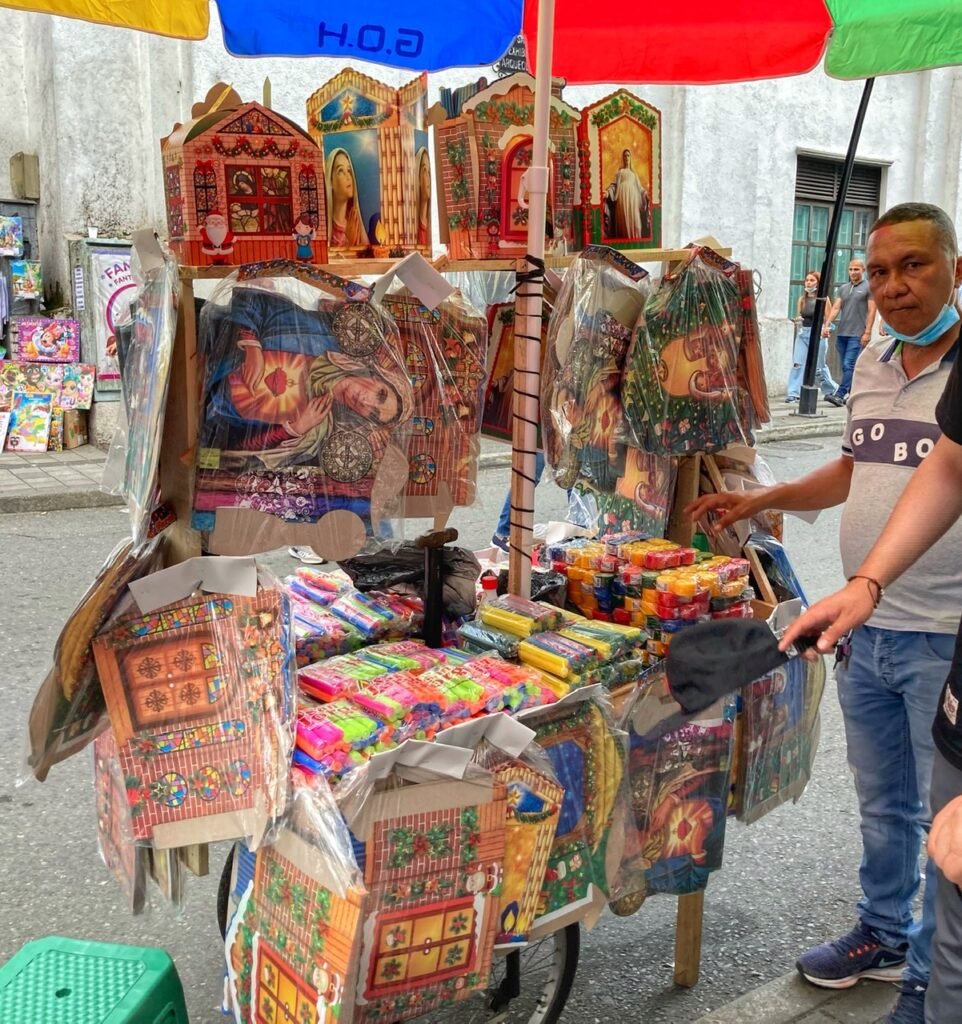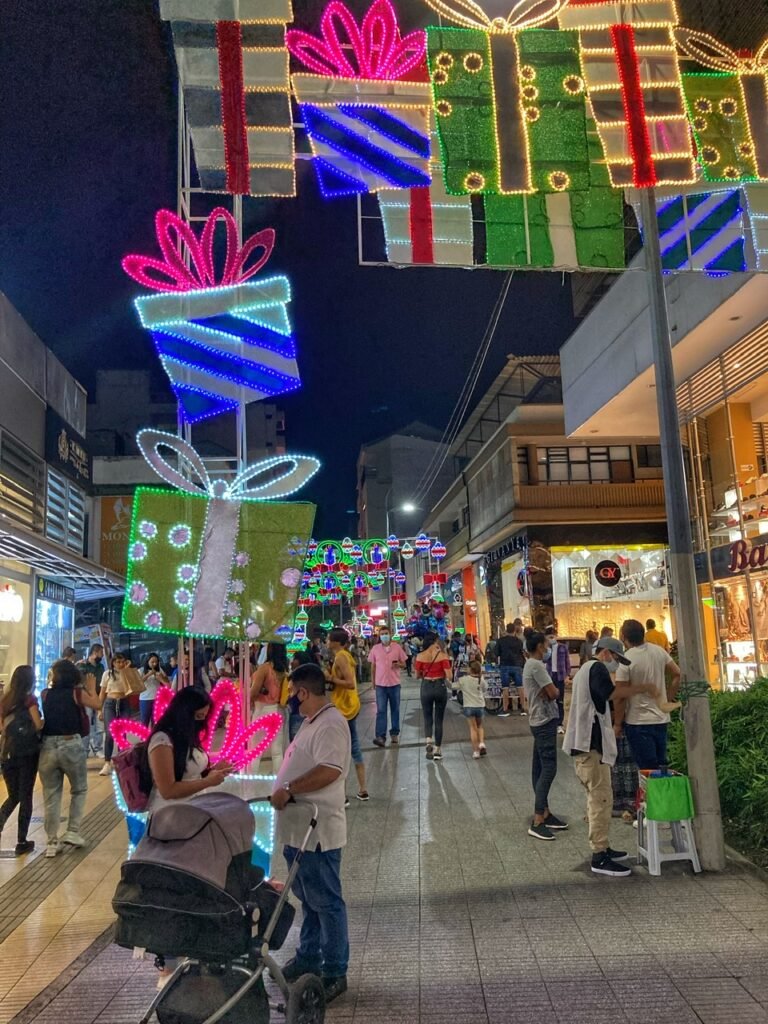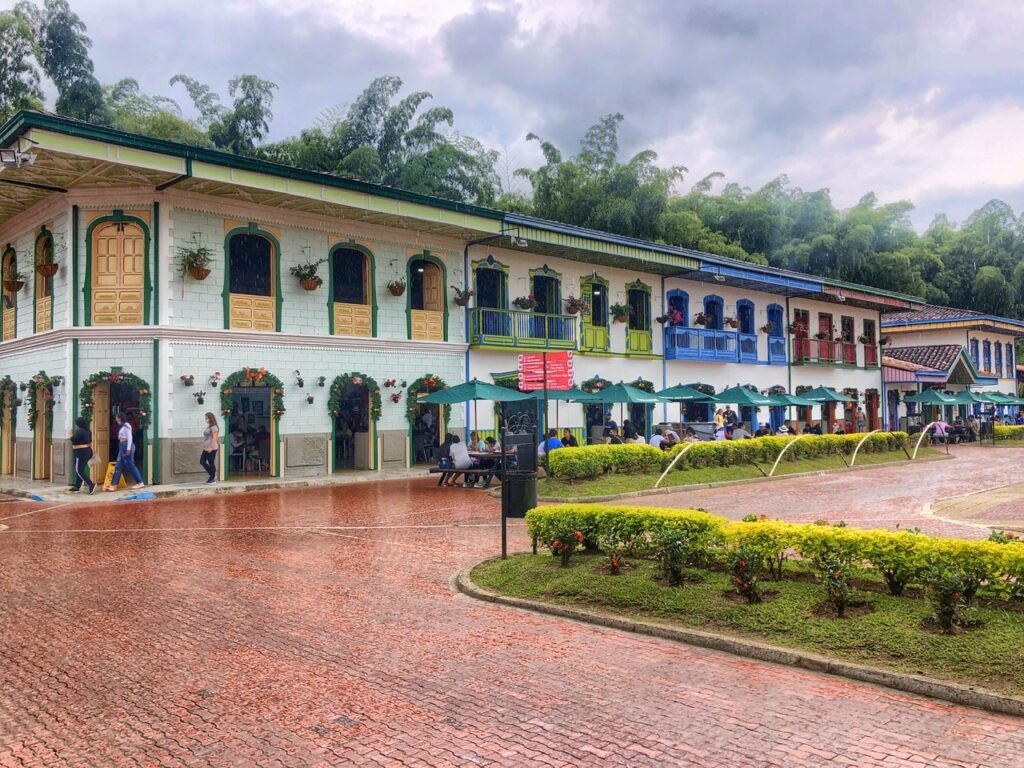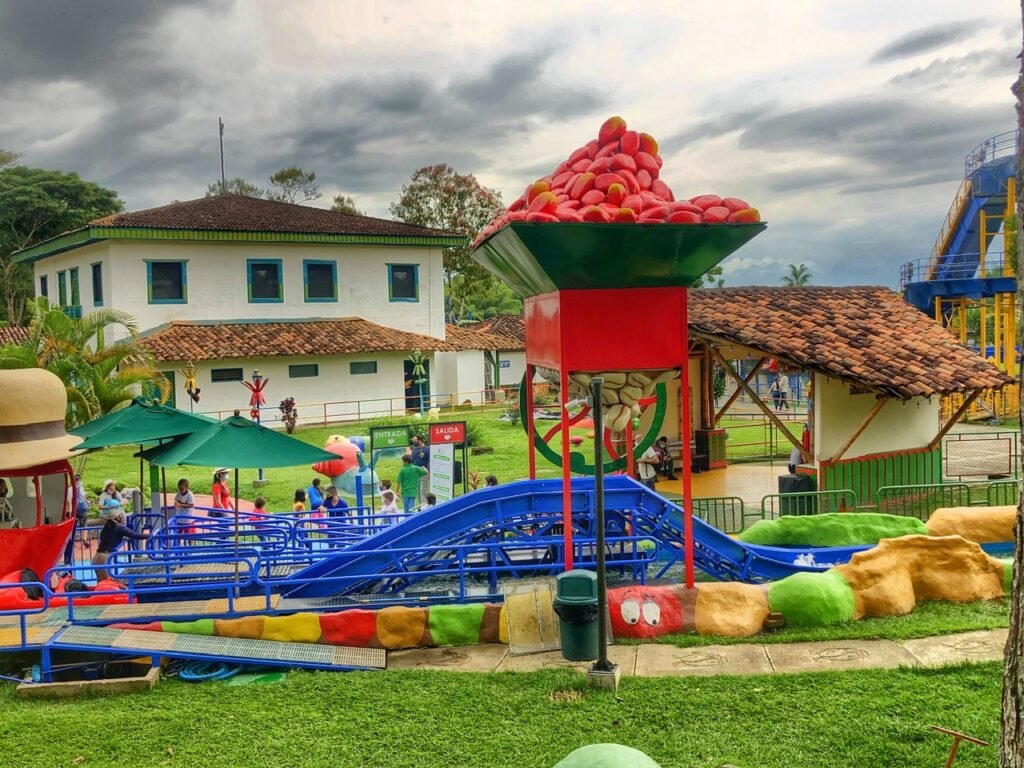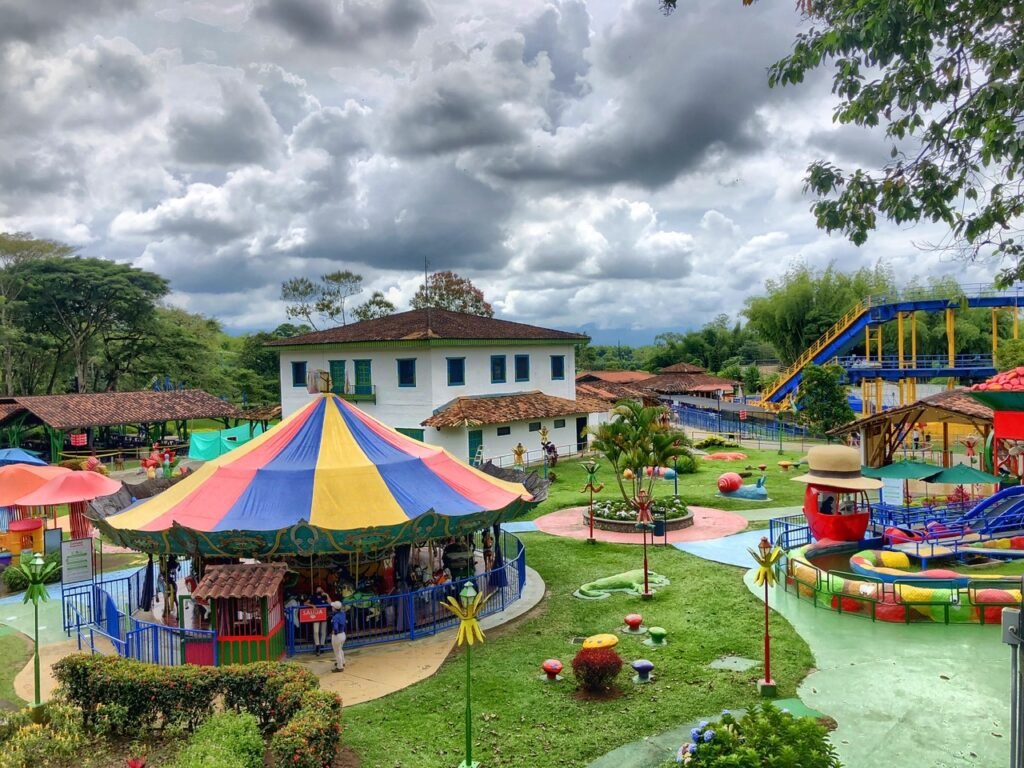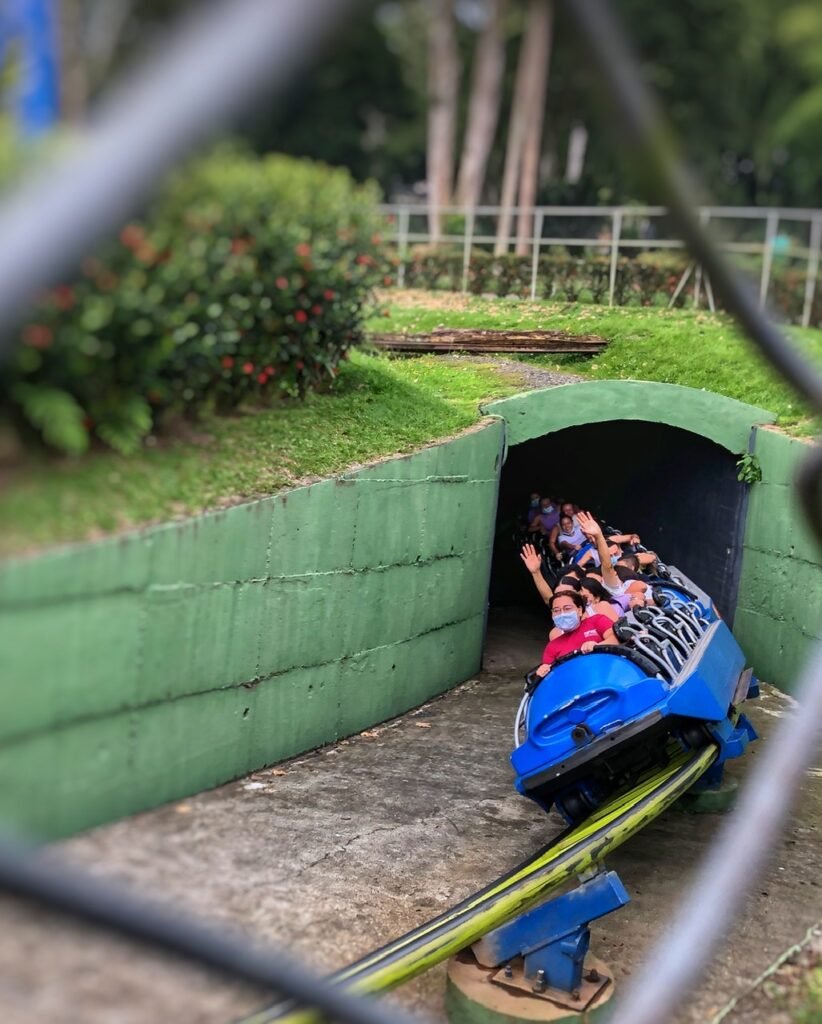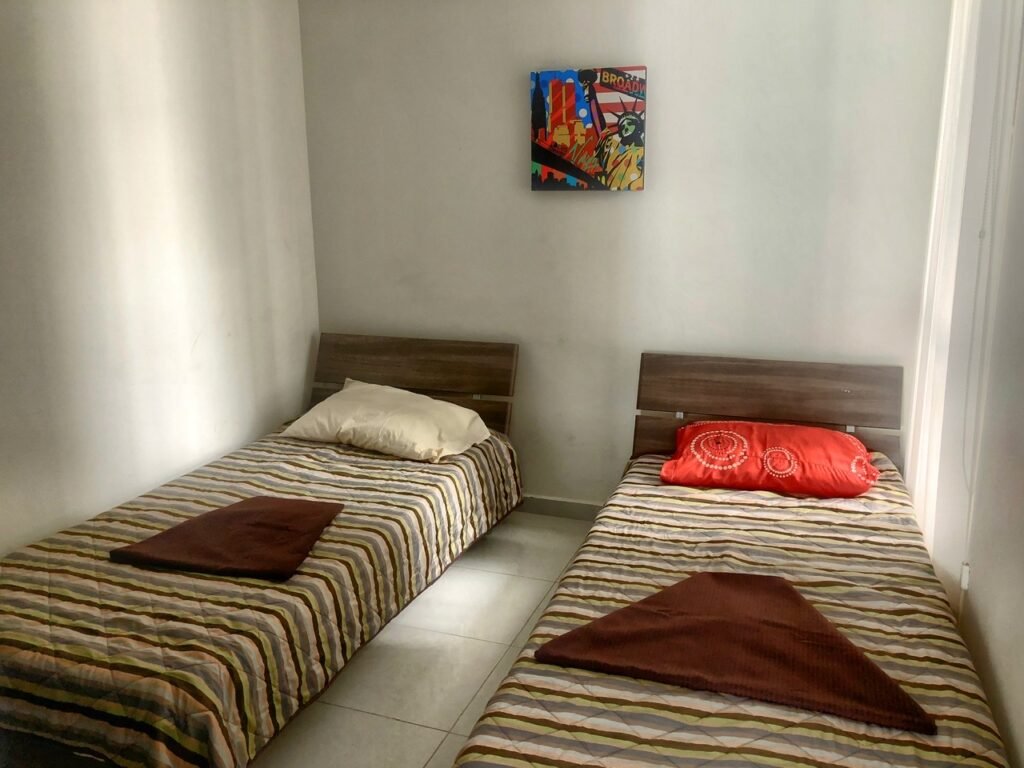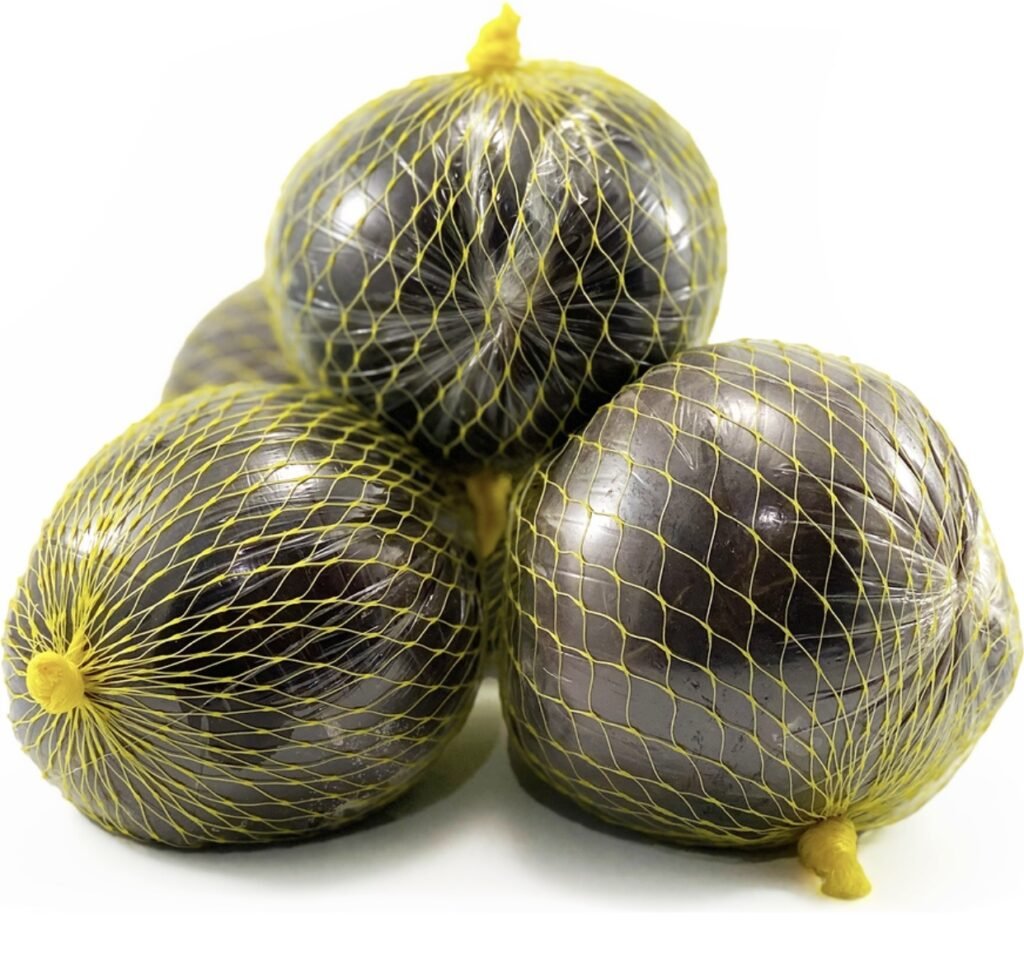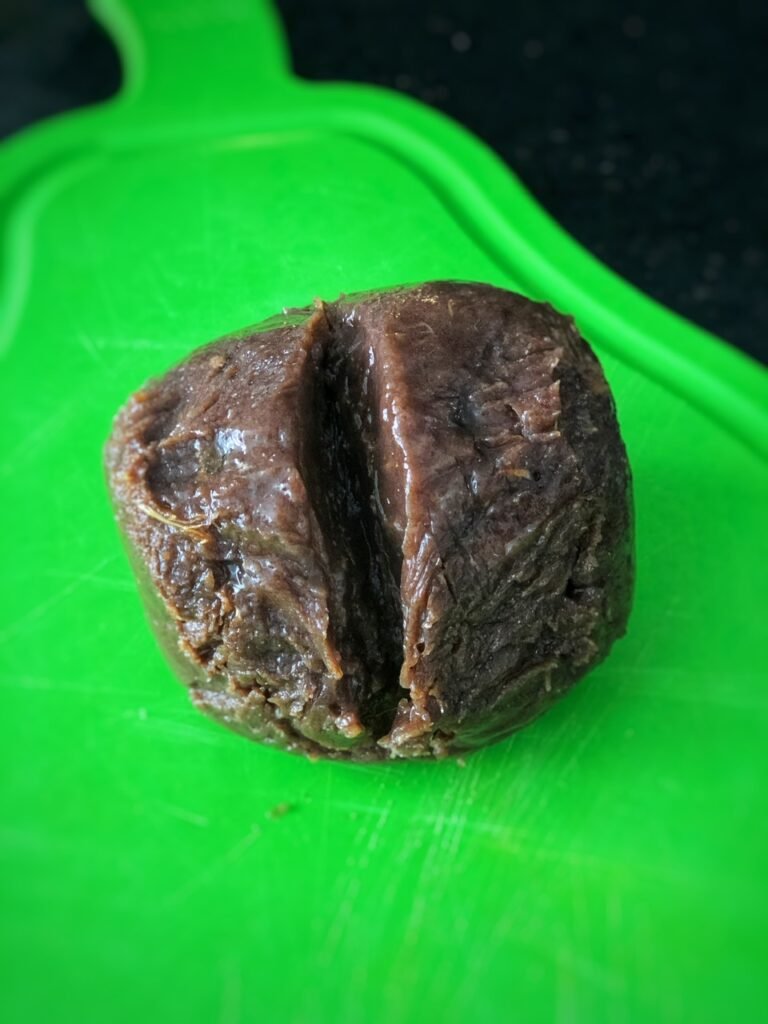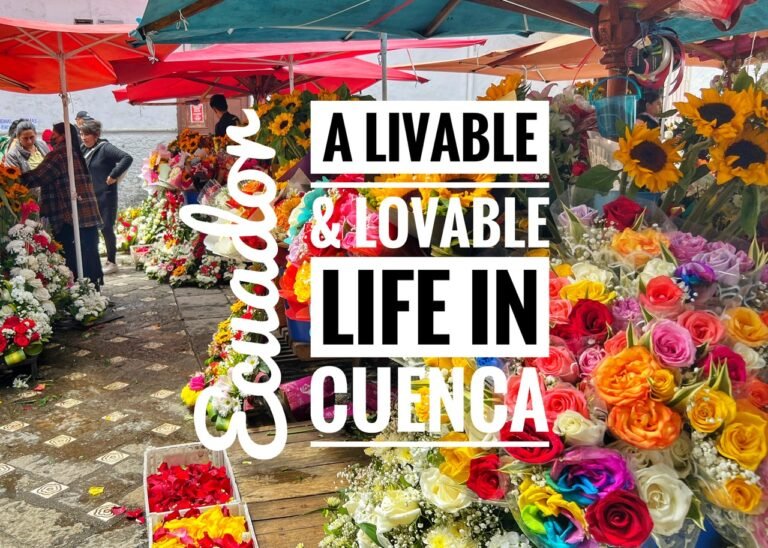
Armenia, Colombia is probably not a place you’ll find as a top tourist attraction in any guidebook. It’s primarily a utilitarian city, amongst three major cities in Colombia’s Eje Cafetera, or coffee region. Due in part to a disastrous earthquake in 1999, the city center is unfortunately a bit gritty and it’s not loaded with colonial charm. However, one thing it does offer is a fabulous jumping off board to other wonders around the area like Filandia, Salento, Pijao and something we didn’t find in any guidebook, the Parque del Cafe, an extraordinary amusement park devoted to that caffeinated delight. We also got to experience Dia de las Velitas (Little Candles Day) on December 7, which offered a very interesting insight to Colombian traditions.
Exploring the Center on Dia de Las Vélitas

Dia de las Velitas is celebrated on the eve of the Immaculate Conception on December 7. (Evidently, we deduced from this, Mary had a very quick pregnancy.) On this night, Colombians light colorful candles and paper lanterns and place them on sidewalks, balconies and windowsills in honor of Virgin Mary. The lights signify the path she traveled to get to Bethlehem. Rosaries are said and masses are held. The candles, music, Christmas lights were absolutely lovely and gave us just the dose of holiday spirit we’d be missing. The fireworks and accompanying barking dogs until 6 am, we could have done without. Pictured here is a cluster of paper lanterns outside a business.

Kids playing near fire in the streets.

One of the center’s Christmas displays.
Before the party started, vendors sold candles and paper lanterns on the street.
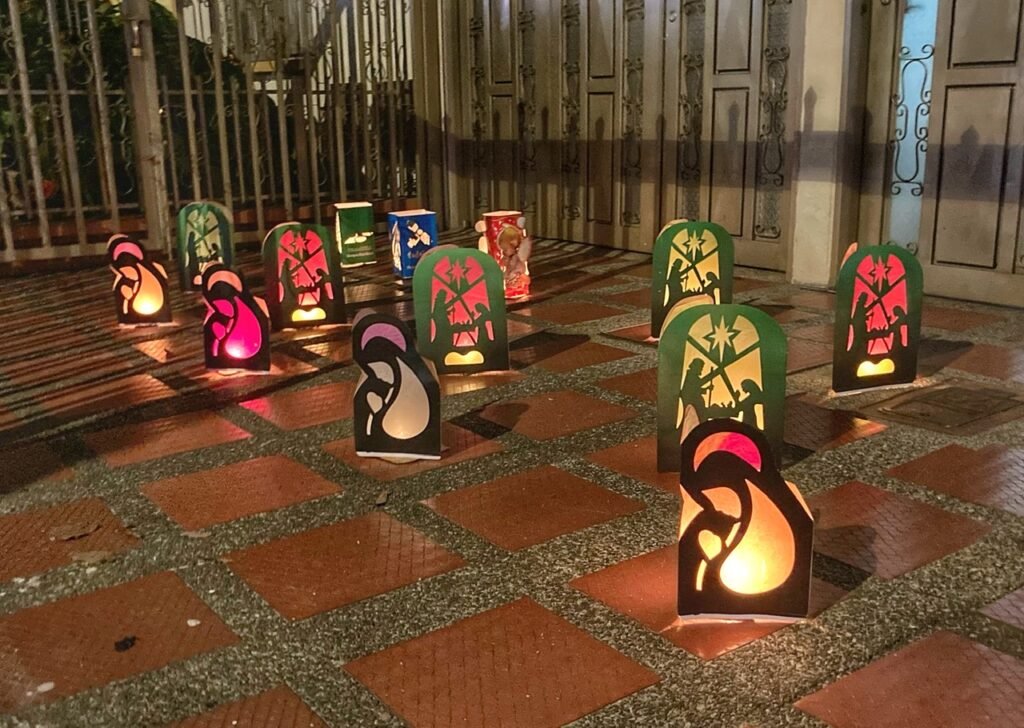
Candles in front of someone’s home.

Celebrating the life of Christmas!

The crown jewel of Armenia’s center is the main pedestrian drag, which had a series of presents you could stroll through.

Or, candy caned arches if you prefer. Just make sure to high five the drunk Santa on the side lines.
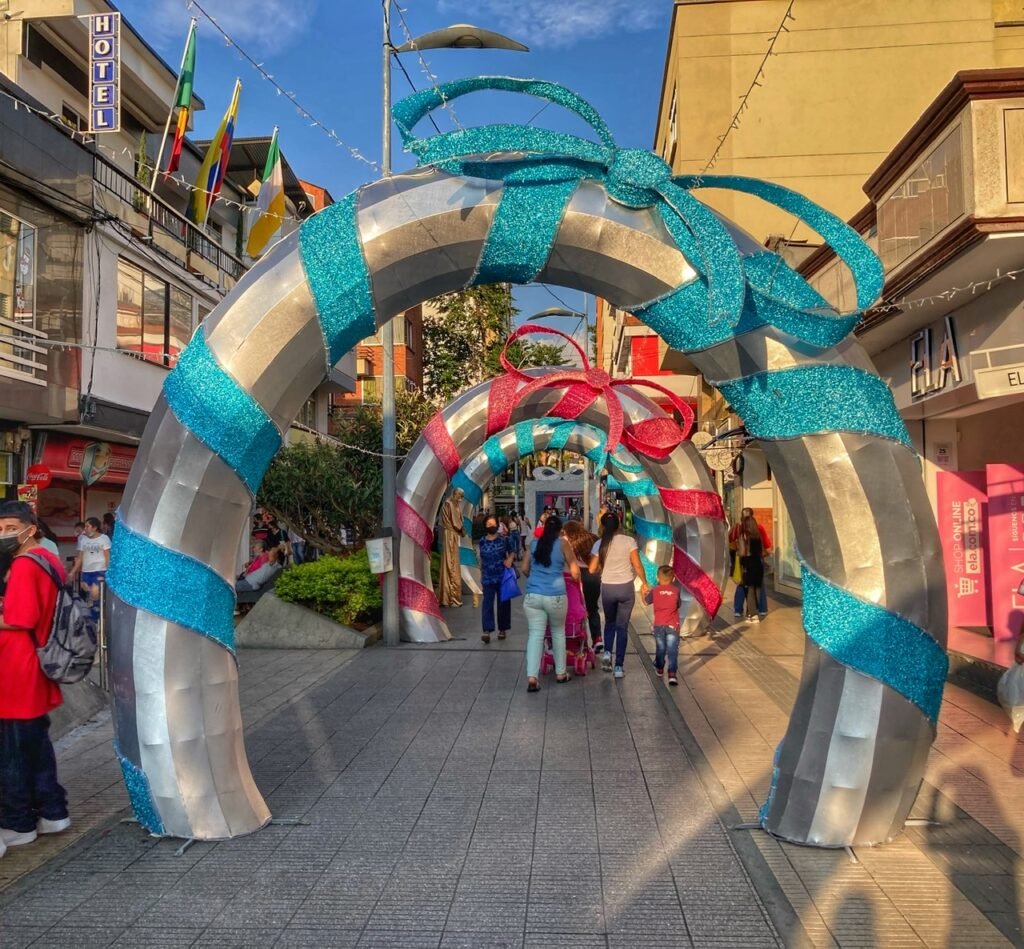
Same arches during the day time (when Santa must have been in the bar.)
It was a wonderful and festive family-friendly atmosphere and a great way to kick-off Christmas season for us too.
Decorations in the main square.

One of the taller buildings all dressed up in electric palm trees.
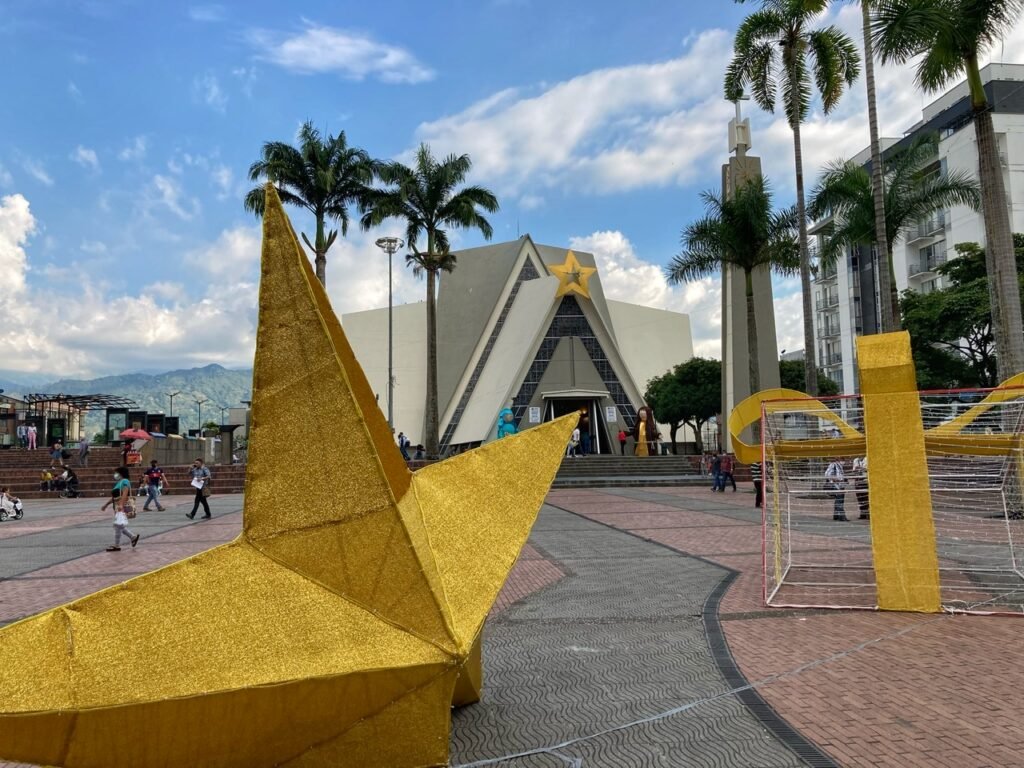
The same square earlier that day. You can see the modern A-Frame triangular Cathedral of the Immaculate Conception, which obviously doesn’t seem as immaculate compared to some of the other churches we had seen lately.

Sadly, the city of Armenia was decimated in an earthquake in 1999 so they pretty much had to start over. The construction of this church was quick, utilitarian and cheap and the design reflects a working-class neighborhood and not a powerful city center. Because of this unfortunate tragedy, Armenia definitely does not have the same charming vibe as other cities or towns we’ve been to, but the people seem to be adapting. The majority of the good restaurants, nightlife and action seem to be northeast of the center, where the energy has shifted. We didn’t learn this until a new local friend, Ruby, informed us where to find the good stuff.

We had a lovely time going out for dinner with Ruby and her family, who we met through a Digital Nomad/FIRED group we’re in called “Go With Less.” Ruby is originally from Armenia and she and her husband (from the States) have brought their kids down here to introduce them to a new kind of life. They all speak Spanish fluently. We very much admired how they were raising their kids and wish them all the best. Thank you for also introducing us to the trendy, up-and-coming side of the city which we seemed to be missing otherwise!

Back in the center, it seems the “O” in “YO” is out of order. It’s a cute welcoming sign, however, in Parque Sucre.

On this evening, despite all the activity and appeal of the pedestrian street, we couldn’t find anything to eat on the streets other than empanadas, arepas, hamburgers, ice cream and street corn, so we went…where else to find some other food options? Ah yes. The shopping mall. Nothing says Christmas like they do after all. The nice thing about the Unicentro was the view in the food court. Here, we actually got to catch a pretty amazing sunset while eating our mall salad and chicken wrap for way too much money.
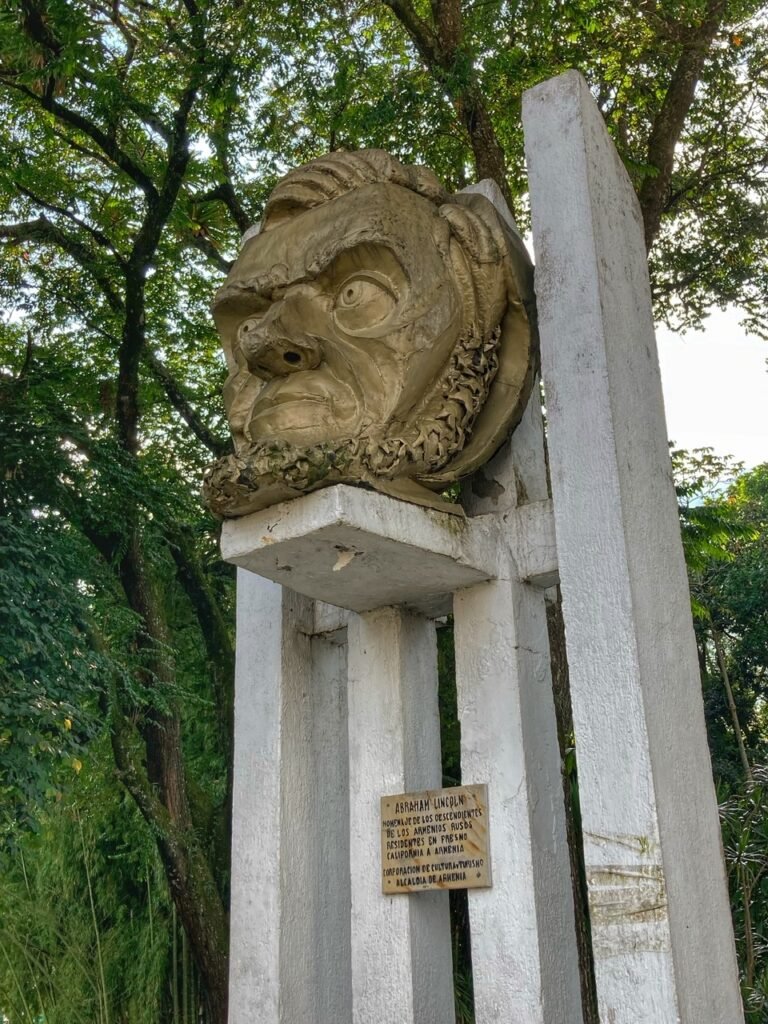
Another note….when walking through the streets of Armenia, Colombia, as an American especially, it’s a bit surprising to encounter a curmudgeonly looking representation of Abraham Lincoln in one of their main town parks, El Bosque. We were even more surprised to realize, it was in fact Good ‘Ol Abe. But why?
According to a 2019 article in the Chronica del Quindío, “it has become clear that Armenia’s name for the capital of Quindio was not placed to commemorate the so-called holocaust of the Turks. Everything indicates that, in 1889, when the city was founded, a farm already had that name, probably for reasons of religious toponymy, related to the mention of Mount Ararat, on the border of the current Republic of Armenia with Turkey. However, in Colombia, a bust has been raised in memory of the massacre of the second decade of the 20th century. This is the Abraham Lincoln Monument, a bronze and cement sculpture. It was donated by ‘The residents of Fresno, state of California, United States, who paid tribute to the 800,000 Catholics killed by the Ottomans living in Armenia at the end of World War I. In Fresno they learned that there was a place in Colombia with the same name as their massacred ancestors and donated the work.”
Lincoln’s reason for why – and not another figure – responds to the gratitude of those American citizens, descendants of Armenians who fled to the United States, with this country that welcomed them.”
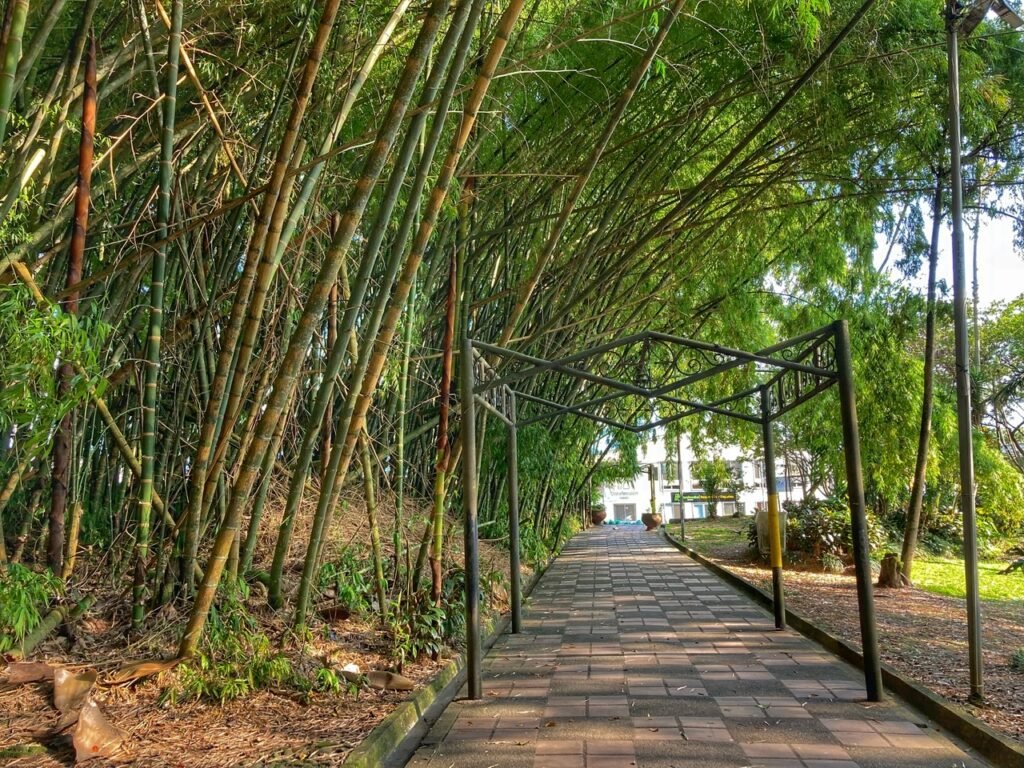
Walking around El Bosque Park.
Parque del Cafe

One of the items on Mandy’s “60 by 60 List” included “ride a roller coaster with Greg.” That’s right…in 14 years, we had never been to a theme park together. Since it’s probably obvious we’re never going to end up at Disneyland, a park devoted to one of the finest beverages ever seemed like a better, and less expensive fit.
And no, much to Mandy’s disappointment, it wasn’t Wino World. Instead, Parque del Cafe welcomed us. This park, founded in 1995 by the National Federation of Coffee Growers of Colombia aims to pay tribute to the efforts and strengths of Colombian coffee growers, preserve the cultural and historical heritage of coffee and supports ecotourism in the coffee zone.
The park offered three roller coasters, a drop tower, two water rides, two cable cars, and shows (unfortunately not running) all set amongst some of the most remarkable scenery we’ve ever seen at a theme park…fields of coffee cherries, undulating green mountains and luxuriant bamboo forests amongst weaving walking trails.
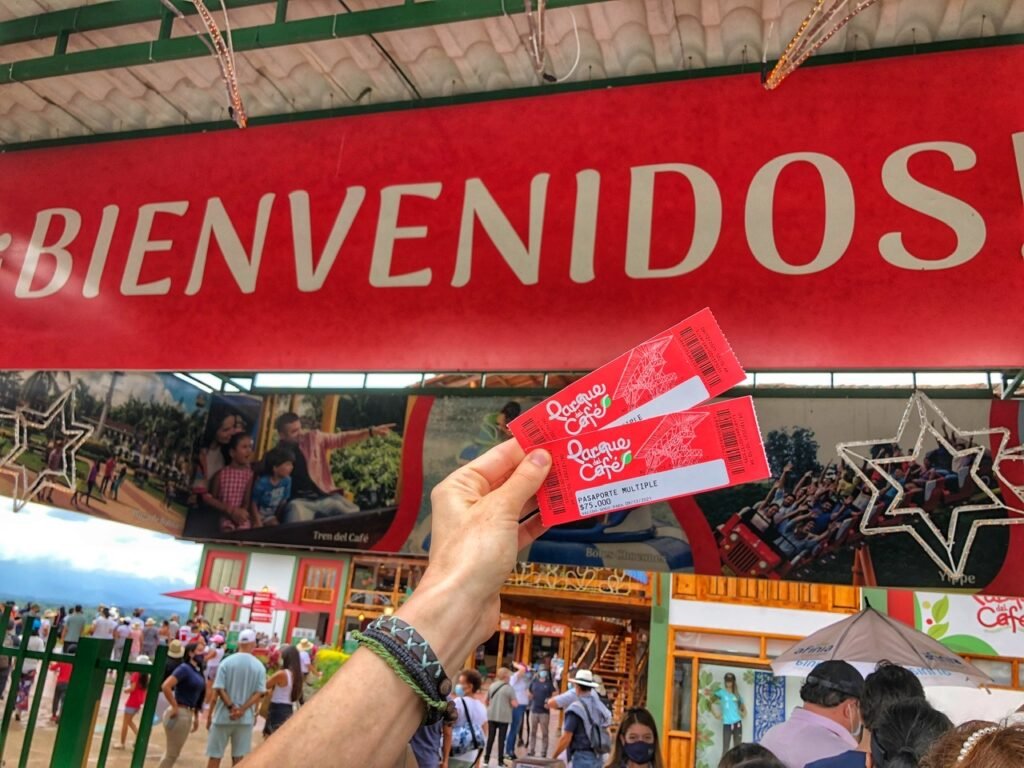
On a lovely 80 degree (27C), we took a mini-bus from the main terminal in Armenia to Parque del Cafe, which took about 45 minutes and cost $10800 pesos or about $2.70 for two tickets. After showing our COVID vaccine cards (now the norm in Colombia) and buying our park tickets at $75000 pesos/each ($19), we entered the park in the most magical way possible.
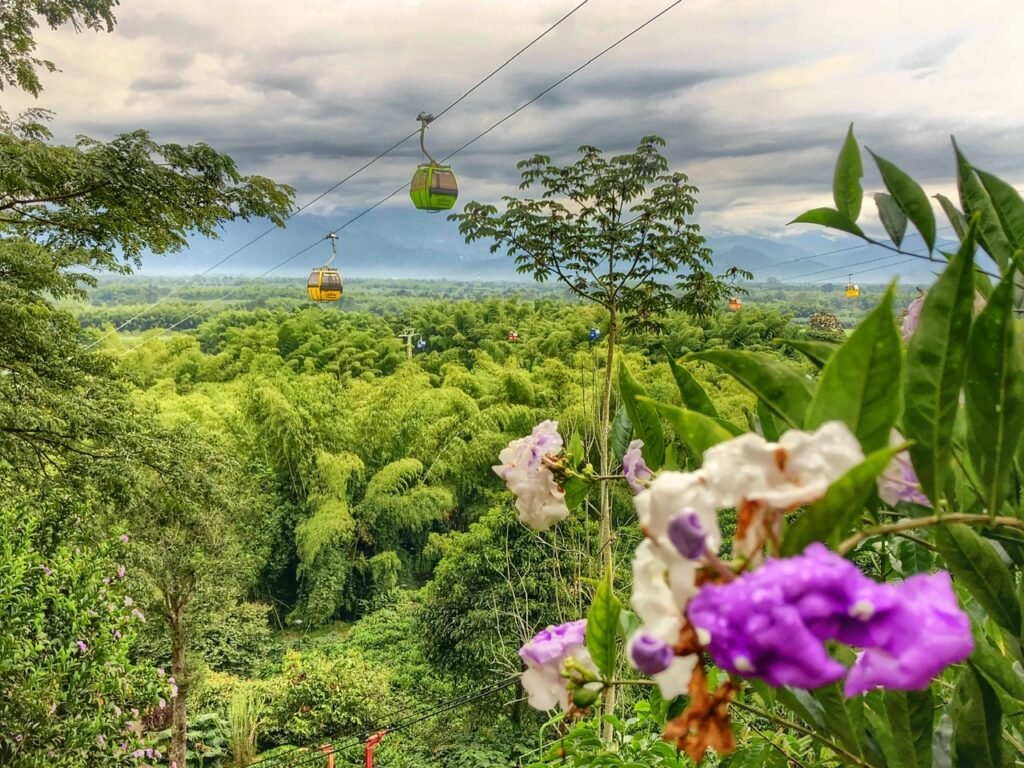
No, it wasn’t a magic carpet ride, but instead a cable car that floated us down into the valley where our day-o-fun awaited.

Mandy wanted to make a beeline for the Krater Roller Coaster before the lines followed…after all this is theme park success 101. Greg, who didn’t grow up the Midwestern roller coaster aficionado that Mandy did, and also gets a little vertigo, took one look at the highest vertical drop in Colombia and said “no bueno.”

So, instead, we dropped our bag in a (FREE) locker and maneuvered our way briskly to the “Yippee!” which looked a lot less threatening. Mandy blends right in to the sign.

And, it was a Yippee indeed because with no line, we walked right up and plopped ourselves in the front car which resembled a jeep, much to Greg’s protest. He reluctantly admitted it was marginally enjoyable, and soon he was ready to at least discuss the possibility of the big boy ride.
Against Greg’s better judgment, Mandy coerced him into going on “one of the most extreme coasters in Latin America,” but only after he figured out it was only 20 seconds from tip to tail. But, as we ascended the first completely vertical hill, he was heard muttering “20 seconds, 20 seconds, 20 seconds” followed by a string of expletives. Fortunately, the surrounding riders spoke a different language.
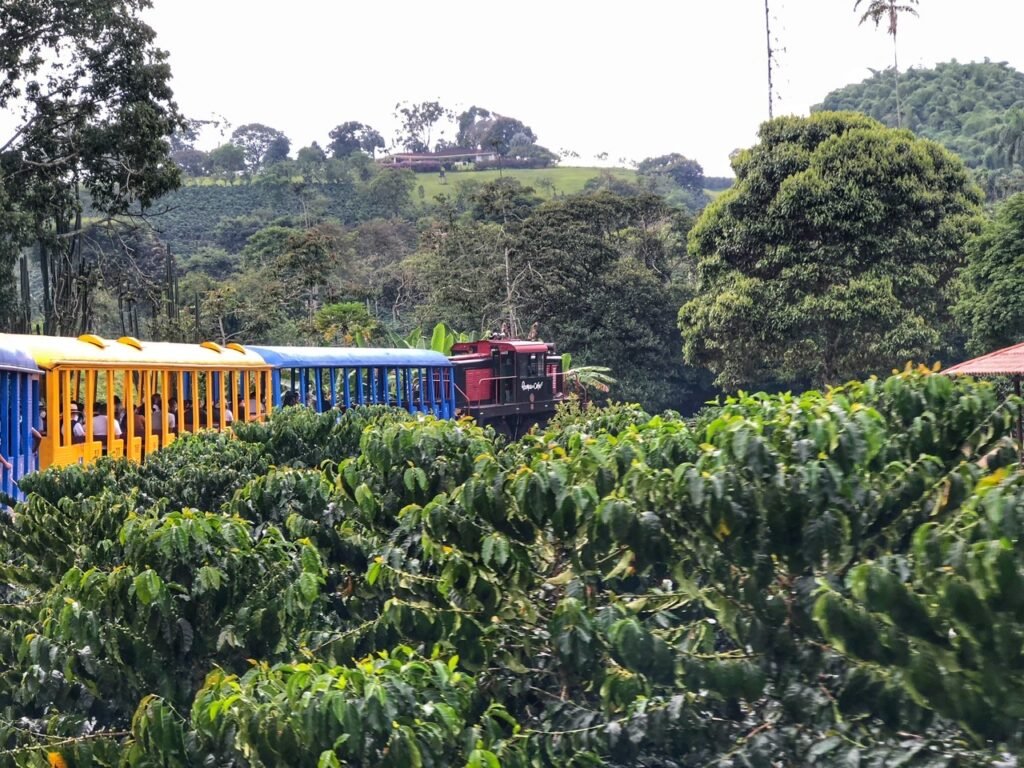
After the forced bucket list item, Mandy said we could go on the park choo-choo train to slow down our hammering heartbeats.

Then, we got quite saturated on the “Rapidos” raft ride as you can see from the before and after photos. While a raft ride of this sort was not a new one for us, the damp and murky masks that followed were. Speaking of which, in addition to mask requirements, the park did a phenomenal job managing COVID and after each ride, a layer of cancer-laden disinfectant was hosed down on every seat.

Time for lunch! It was absolutely foreign for us to be at a theme park for the day and feel like we could participate in the buy-buy-buy crowd. On top of the $19 admission, the food and souvenirs were very reasonably priced. We had two Menu del Dias with chicken, fries and a salad for $28000 pesos ($7), followed by a massive piece of salted caramel cake and a Coffee Granizado (like a frappucino) at Juan Valdez, ($12000/$3). And then, Mandy even bought a well-made t-shirt for $6.

The main park square is a 1928 replica of Armenia’s Plaza de Bolivar, complete with a scaled replica of the 1946 Armenian Train Station.
And the buildings alongside couldn’t have been a more authentic representation of a stereotypical Colombian village.
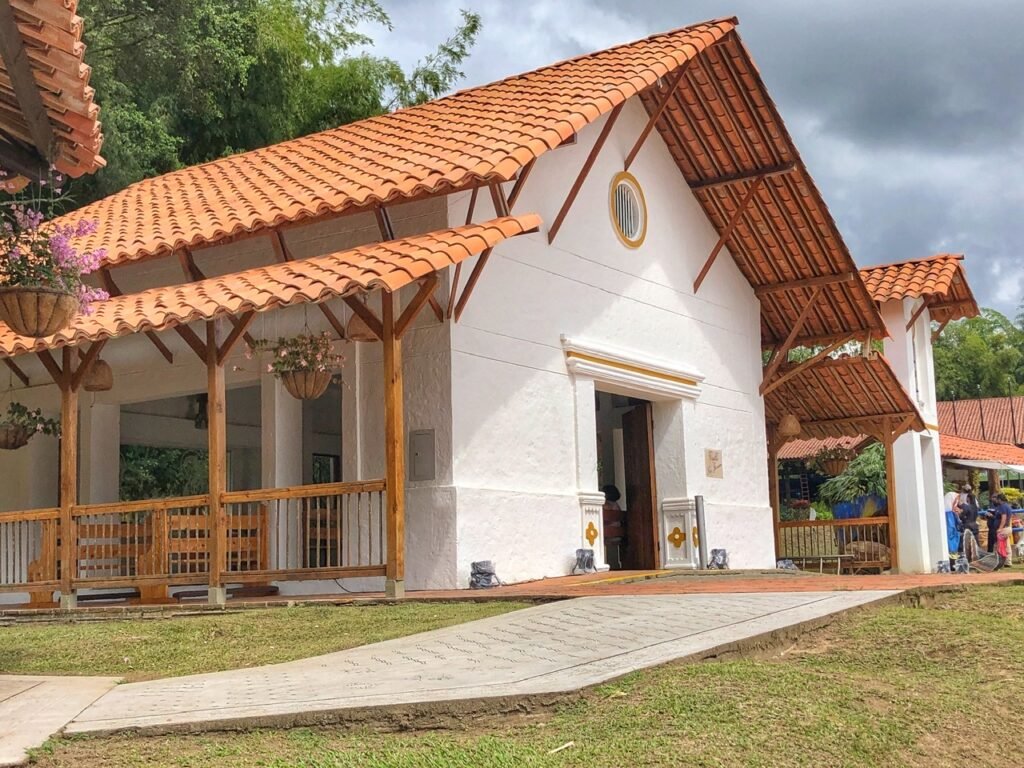
There is even a church on the square called “La Capilla San Jeronimo” which is an ideal place to utter a prayer that you’ll survive ‘Krater” when your wife forces you onto it.
The kid’s section of the park was colorful and happy and even had its own coffee theme, like this water flume ride where the kids get to ride in a bean shaped cart.

Where you can dress up as Juan Valdez and have your photo taken. It cost $8000 pesos, or $2.
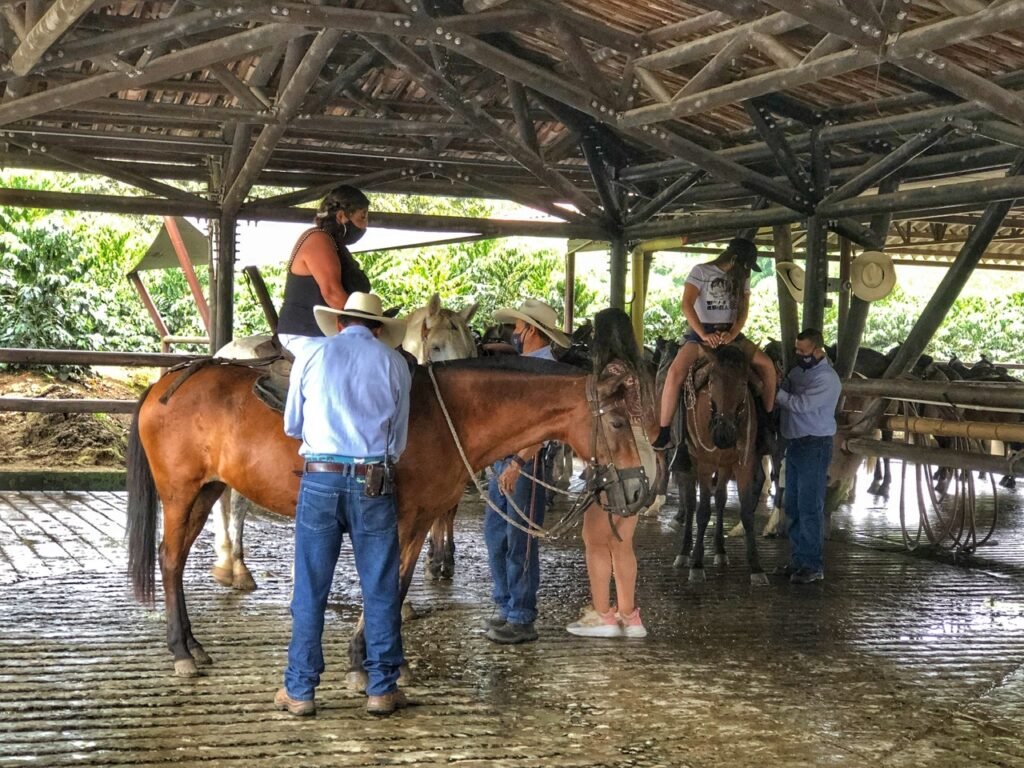
Because horse culture is such a big part of coffee country, they also offered 30-minute horse-back riding trips for an additional $12000 pesos ($3).
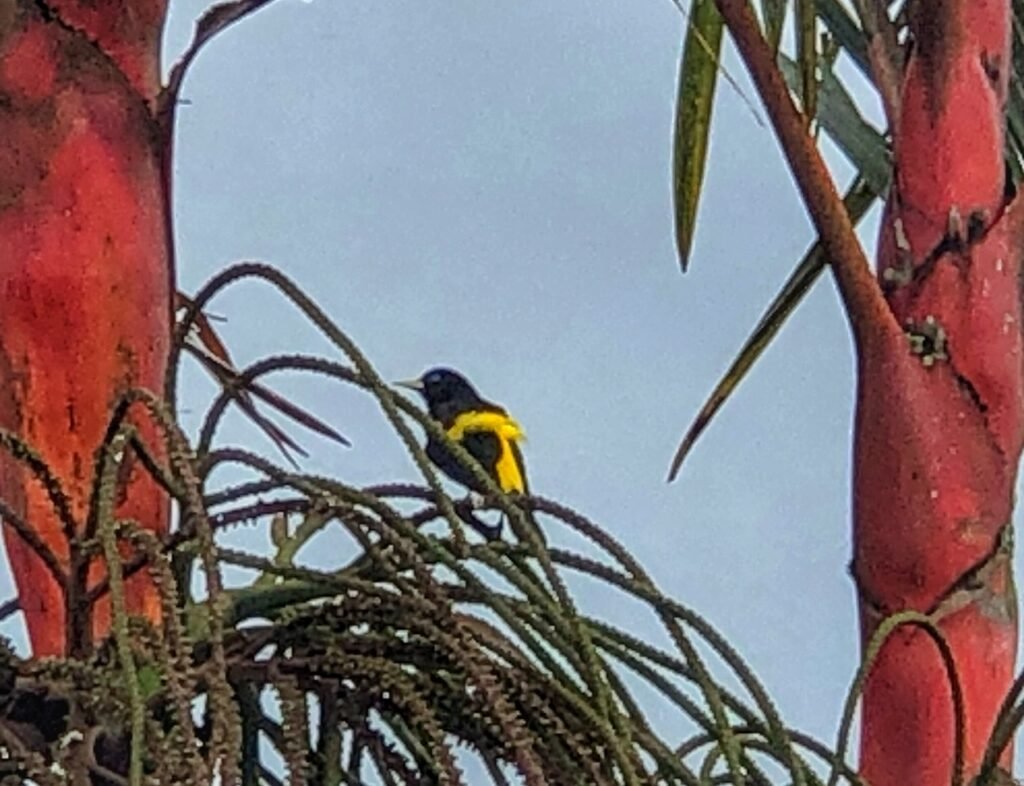
These eye-catching black and yellow birds were everywhere!
The third, and Colombia’s longest roller coaster, is fittingly named “Montana Rusa”, which means roller coaster in Spanish. It actually translates to Russian Mountain, which is a perplexing translation because Russia is not exactly a country known for epic mountains, nor corkscrews and loopety loops. Ah, maybe it’s the underground portion that fits the name better…
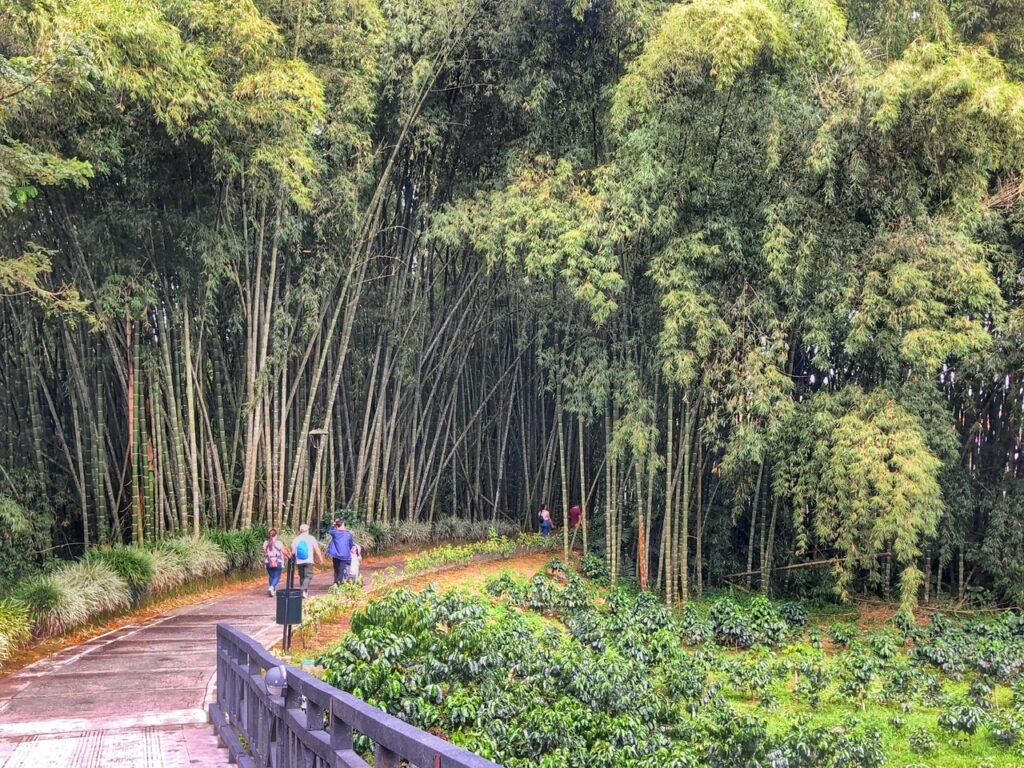
One of the succulent bamboo forests within the park. The bamboos are one of the most representative native plants in Andean forests, also known as “natural steel.”

This hanging bridge and its imposing structure connects the Path of Myths and Legends” and the “Path of Coffee” to “Quindian Town.”

The Casa Campesina is old farm house which now serves as a place for demonstrations and tours. It it built with classic Quindian architecture of the region.
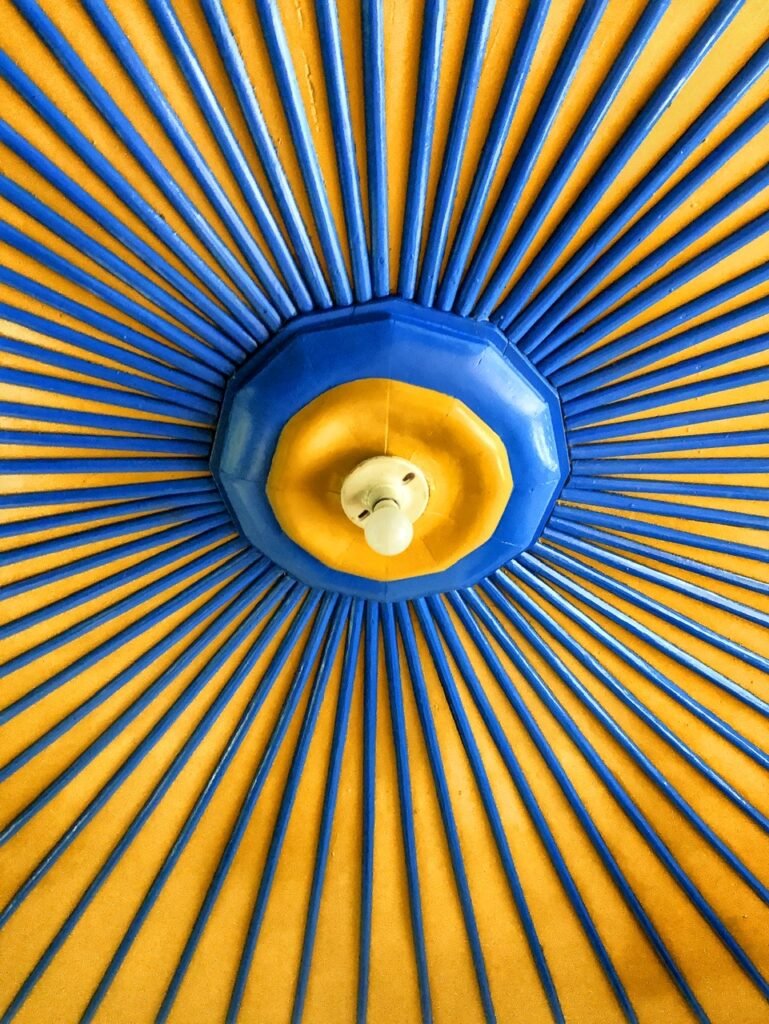
We’ve seen geometric ceilings like this quite a bit in the Quindio department and find them really interesting because they create an illusion that the ceiling is vaulted, although it isn’t.
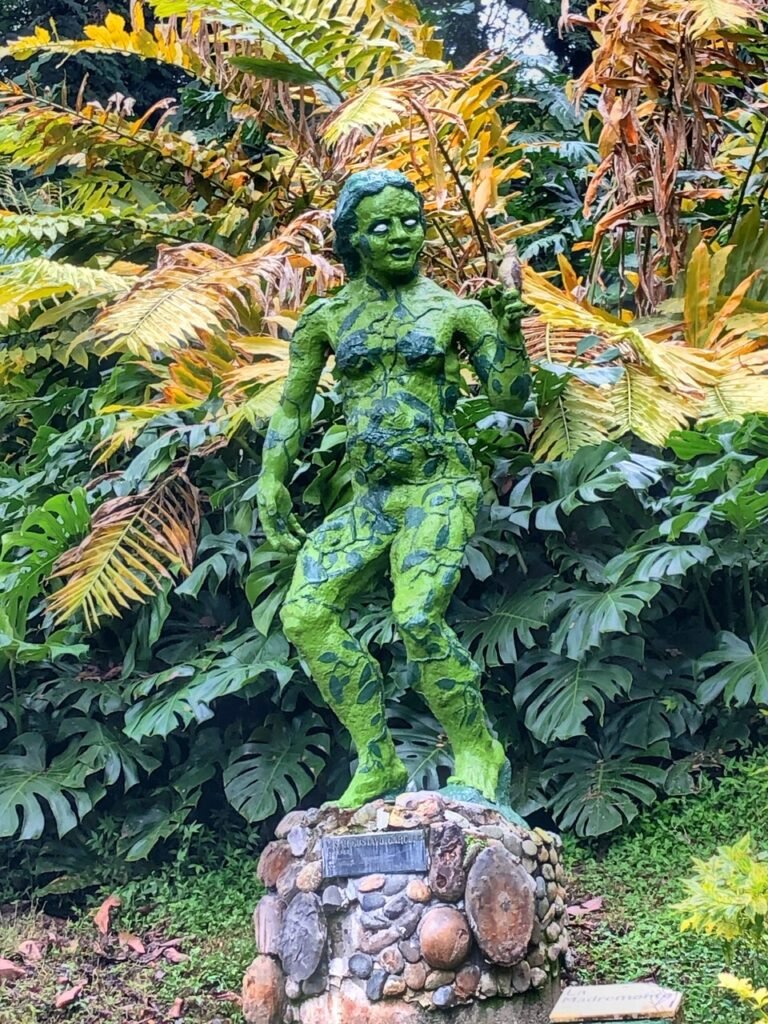
One of the trails we really loved led up out of the park and was called “The Trail of Myths & Legends” which featured multiple characters resembling a mix of Greek gods, biblical characters and what appeared to be the deranged wife of the Jolly Green Giant, pictured here. She’s pretty.
In actuality, this creature is known as La Madremonte, who is “considered by the peasants of the Antioquia colonization as the titular deity of the mountains and jungles, who governs the winds, rains and whole plant world. She is described as an angry woman always dressed in branches and fresh leaves, vines and green moss. (We got the angry part right). She expresses intense anger at the hunter-gatherers and fisherman who invade her domain.”

This Zeus-y looking dude is El Mohan, who is a forest or barren land spirit. In some legends, he is a satyr-like being who steals and rapes young women and lives in a cave-like grotto in the bottom of the great jungle rivers where he keeps his female captives. In other legends, he’s depicted as the spirit of an old Indian who steals fisherman’s bait, catch or nets and has the power to change shape into a cat-like beast. (Wikipedia).
Hmmm….our opinion? The Colombians are a lot more creative, and a bit more enigmatic, than the Greeks.

Next, we have…what looks like a very sculpted and busty Eve, who must lift a lot of cave furniture based on that physique. Nope, turns out the snake-draped lady with a pet tiger is actually Madremonte again.
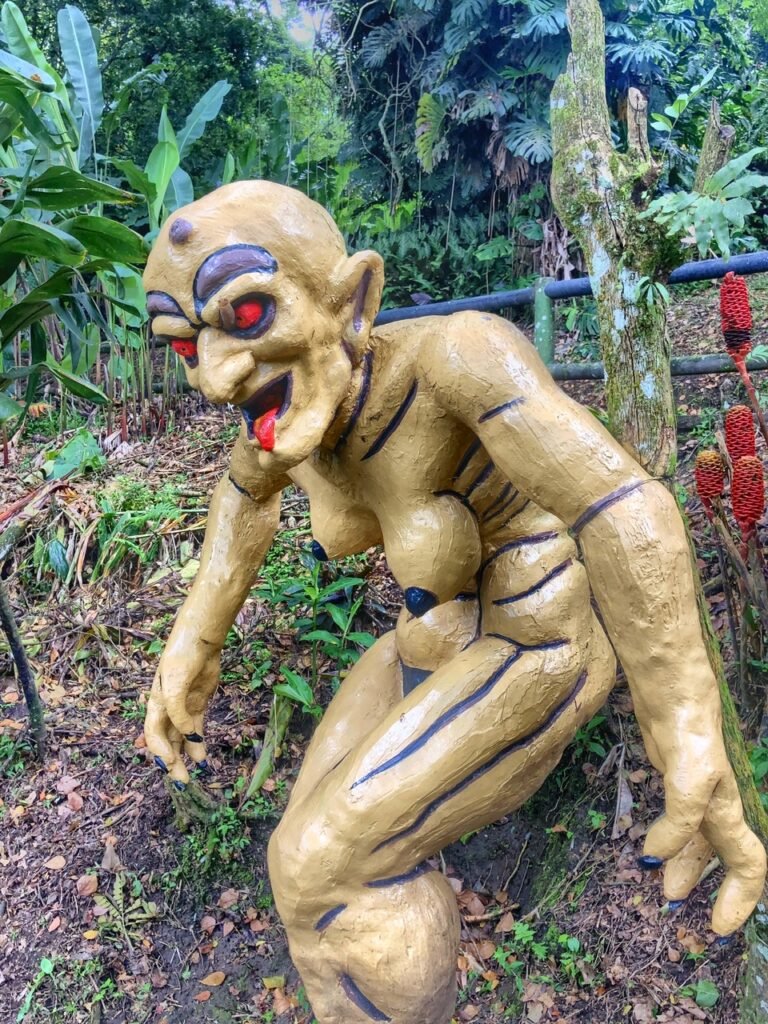
This chiseled beauty is called La Patasola and is another myth in South American folklore. The Patasola “appears to male loggers or hunters in the middle of the wilderness when they think about women in the likeness of a beautiful and seductive woman who lures the man deep into the jungle. Once in the jungle, she turns into her true hideous appearance as a one-legged creature with ferocious vampire-like lust for human flesh and blood.” (Wikipedia).

This fine-looking lad is El Horasquin del Monte (The Litter of the Mountain) seems to be the Colombian version of Sasquatch. He is a man-tree covered with moss, branches or flowers who walks quickly among the foilage to scare off hunters or loggers as they prepare to kill animals or knock down a tree. Good for him. We need more of these guys.

The squirrel of Colombia
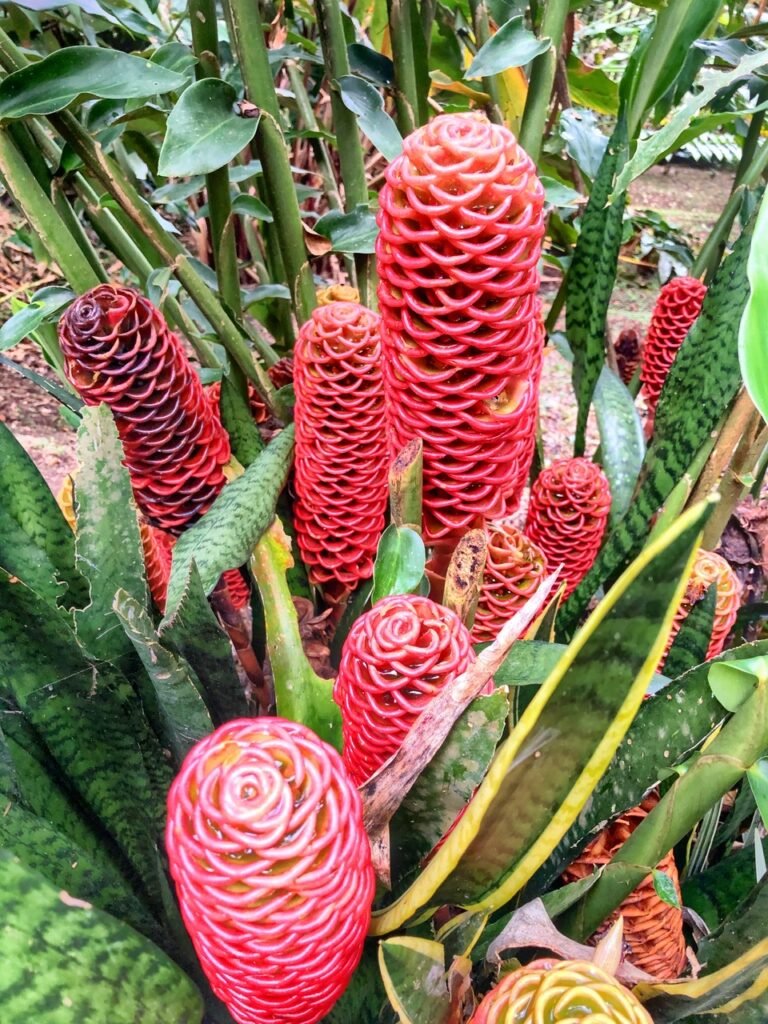
It’s difficult to find a more showy and unusual tropical flower than the Beehive Ginger. They collect a ton of water within their folds, feel a bit like rubber and seem to be very durable.
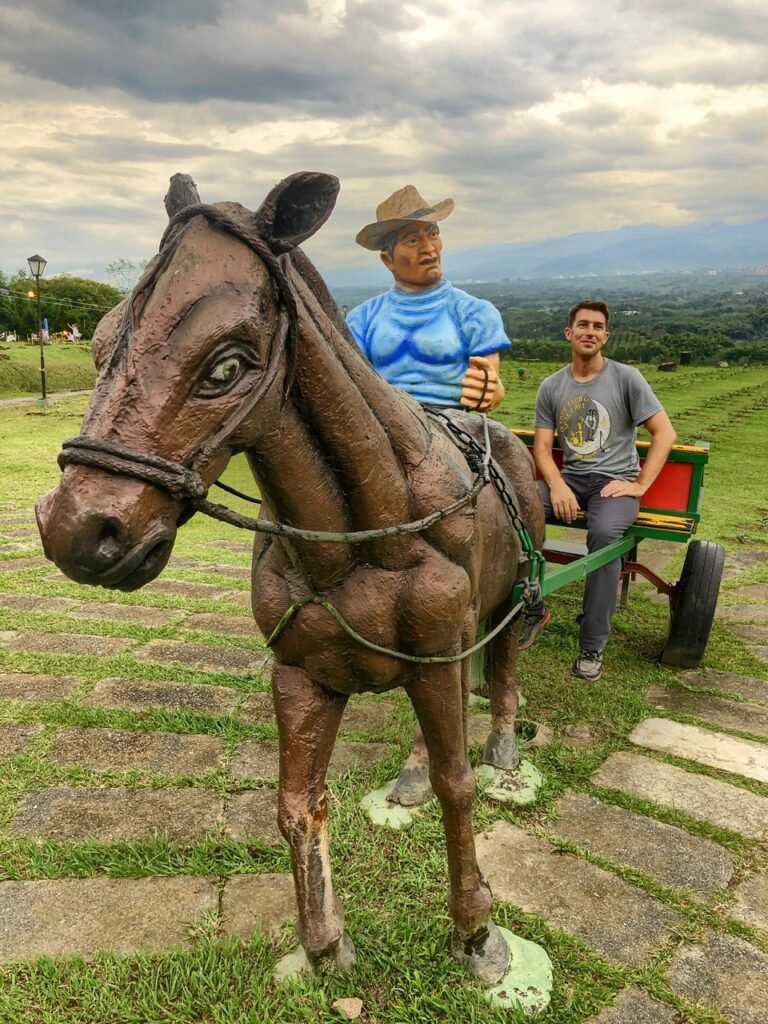
Greg didn’t want to walk anymore, so he caught a ride.

Little baby coffee plants destined for Starbucks cups.

After World War II, the entire world took interest in Jeep Willys. Colombia did not escape this interest because of the need of a suitable vehicle for its tough mountain roads. The first one hundred Jeep Willys arrived in 1950 and were immediately used for coffee transportation.
On the way out, we quickly had to hit the Coffee Museum, which was four interactive and really well done rooms that taught the history of the coffee and honored more than 500,000 coffee families in the region.

Greg dreaming about always having access to this coffee.

Hmmm….maybe not. Those bags are kinda heavy.

Mr. Starbucks.
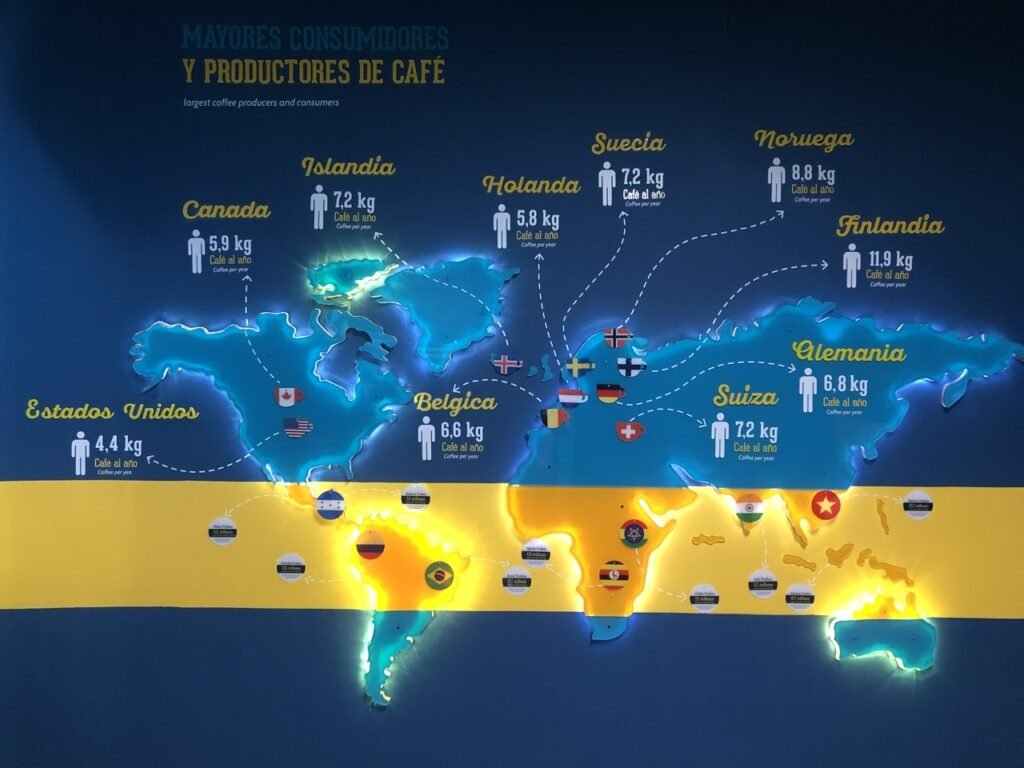
This map shows where coffee is produced in the world (the yellow band) and where it is shipped to. Top importers of Colombian coffee include the United States, Europe (led by Germany), and Japan. The top exporters of coffee are Vietnam, Brazil and Colombia.

And our coffee drinkers will appreciate this display…all the reasons coffee does the body good!
Our Accommodation in Armenia
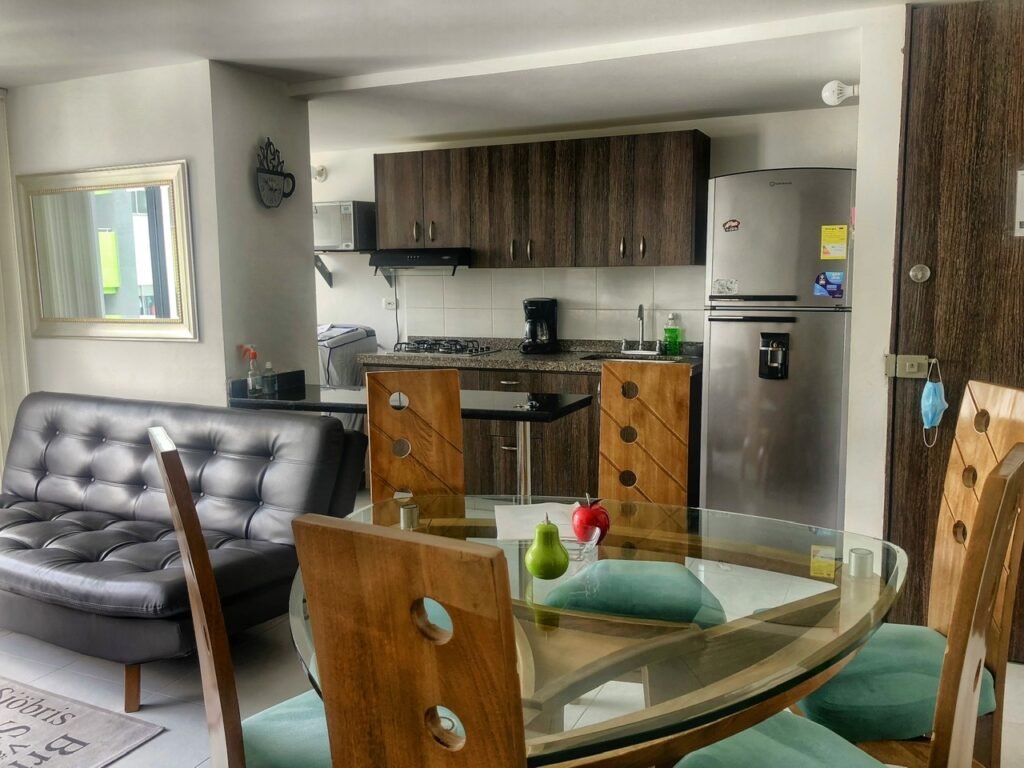
Our pad in Armenia was northwest of the center and called Tesalonica Apartments, found on Airbnb. We stayed for two weeks and got extra space because we knew our friends, Abby and Alex, would be staying one of the nights with us. It had three bedrooms and 2 bathrooms for $24/night.
It was an okay place to stay, although it didn’t offer much character or charm, and there were dogs barking incessantly, day and night. We haven’t figured out why pet owners in Colombia (and Mexico….and Panama….) just don’t seem to scold their dogs for acting like morons.

While in our apartment one night, we also had a more interesting creature visit. Colombia has the largest collection of butterflies and moths in the world and this Black Witch (or bat) moth is one of the biggest. Speaking of which, you may remember a famous sighting of Black Witch Moths in the movie “Silence of the Lambs,” in which Hannibal Lecter inserted actual Black Witch Moth cocoons into the mouths of his victim.
Random Bonus Tidbit: The Borojo Fruit
The freakish fruit finders (our self-proclaimed title) have done it again in Armenia. This time, it was the slightly booger-resembling, sticky and jiggly Borojo which is packed with B Vitamins and is bizarrely known as jugo de amor (love juice) due to its Aphrodisiac qualities. In fact, in the tropics where it grows, Valentine’s Day is also known as International Borojo Day. On this day, it’s common for men to grab a Borojo juice on the street on their way home to see their wives ?.
The sweet and tart fruit, which we think resembles a tamarind, is mixed with milk, cinnamon, sugar and vanilla into a frothy love potion. It is packed in a plastic and netted bag, making it look like a water balloon, to help preserve its delicate texture.


